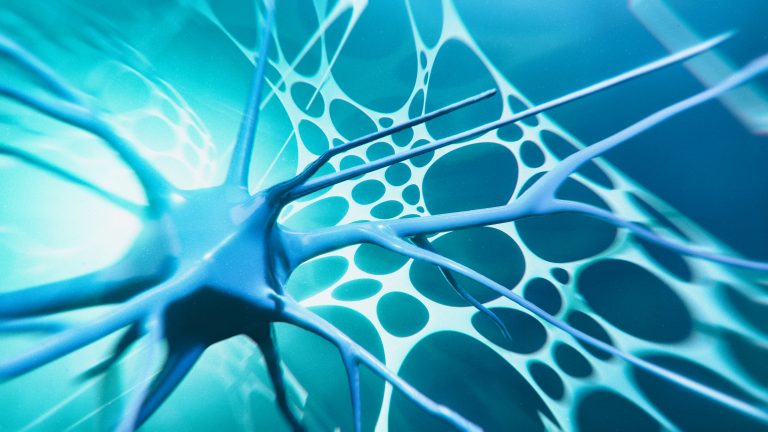
Research led by Johns Hopkins University School of Medicine shows high levels of arachidonic acid are present in people and animals with amyotrophic lateral sclerosis (ALS) and that reducing these levels could have therapeutic benefits for people with this devastating condition.
The team found that spinal motor neurons in people affected with ALS contain about 2.5-times more arachidonic acid than those of people without the condition. Levels of this fatty acid were also higher in the neurons of mice and fruit flies with ALS.
Treating the affected mice and fruit flies with caffeic acid, which acts to reduce arachidonic acid levels, had a beneficial impact with a 20-25% increase in grip strength in the mice and improved movement in the flies and increased survival observed in both these species.
ALS is a degenerative neurological condition, affecting approximately 30,000 people in the U.S., resulting in gradual destruction of spinal motor neurons, causing paralysis and eventually death in those affected. Around 10% of cases of ALS have a genetic cause and the rest appear to occur spontaneously.
Effective treatments or cures for this life-threatening condition have proved elusive to date. As the condition is specifically expressed in the spinal neurons, Gabsang Lee, associate professor of neurology at the Johns Hopkins University School of Medicine, and colleagues wanted to investigate how these neurons are affected on a cellular level in people with ALS.
The researchers compared spinal motor neuron samples with ocular neuron samples, which are not usually impacted in people with ALS, taken from 17 individuals with the condition and compared them with samples taken from six individuals without the condition.
As described in Nature Neuroscience, the results showed that arachidonic acid levels were noticeably higher in the spinal motor neurons from people with ALS than in those of unaffected individuals or in ocular neurons from patients with ALS.
To investigate this finding further, Lee and team studied both a drosophila fruit fly and a mouse model of ALS. They also had higher than normal levels of arachidonic acid in their motor neurons and when the researchers treated these model species with caffeic acid to reduce arachidonic acid levels, movement symptoms improved and both the flies and mice lived longer than those left untreated.
Although these results are promising, there are still a lot of unknowns. “We don’t know yet why ocular and spinal neurons differ in lipid metabolism or what percentage of ALS patients have alterations in the arachidonic acid pathway,” says Lee in a press statement.
The researchers are now planning to confirm their findings and investigate further if this early work could lead to a treatment for individuals with ALS. However, they caution against supplementation with caffeic acid, which is naturally found in several foods as well as in coffee and tea. Currently sold as an unregulated supplement, caffeic acid can be dangerous in high quantities and not enough research has yet been done on what constitutes a safe level, the scientists emphasize.













